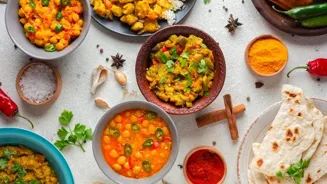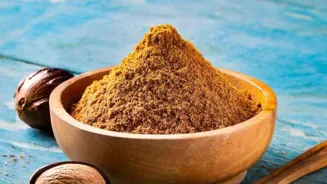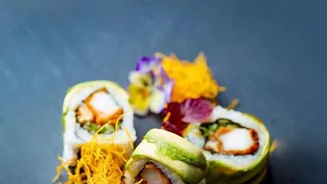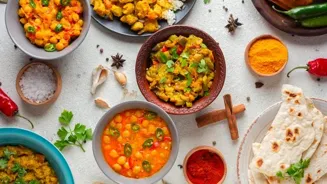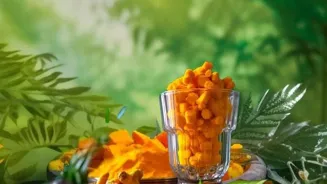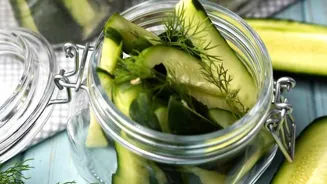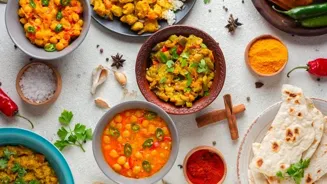Unveiling India's Culinary Heritage: Explore 9 Traditional Cooking Methods for Flavorful Vegetarian Delights!
India, a land of vibrant cultures and breathtaking landscapes, boasts a culinary heritage as diverse
and rich as its history.
Beyond the curries and biryanis that often take center stage, lies a treasure trove of traditional cooking methods, each imparting unique flavors and textures to vegetarian dishes.
These techniques, passed down through generations, are not just about preparing food; they are about preserving culture, connecting with nature, and savoring the simple joys of slow, mindful cooking.
So, ditch the instant pots and microwave ovens for a while, and embark on a culinary journey back in time. Here are 9 traditional Indian cooking methods you absolutely must try to unlock a whole new dimension of flavor in your vegetarian cooking!
Dum Cooking
The Art of Slow Infusion: Dum cooking, originating from the royal kitchens of Awadh, is a slow-cooking technique that involves sealing the ingredients in a heavy-bottomed pot, traditionally an earthen one, and cooking them over low heat.
The "dum," meaning "breath" in Persian, refers to the steam that builds up inside the pot, gently cooking the food in its own juices. The lid is sealed with dough, preventing any steam from escaping, which allows the flavors to meld together beautifully.
This method is perfect for achieving tender vegetables and aromatic rice dishes. Imagine a fragrant vegetable biryani, where each grain of rice is perfectly cooked and infused with the delicate flavors of saffron, cardamom, and rosewater.
The slow cooking process ensures that the vegetables retain their nutrients and flavors, making it a healthy and delicious option. Dum cooking is a testament to patience and the art of letting flavors develop naturally.
Even simple lentil dishes can be elevated to a gourmet experience with this technique.
Tandoor Cooking
Embracing the Fiery Heat: The tandoor, a cylindrical clay oven, is a staple in Indian kitchens, particularly in North India. It uses the intense heat of charcoal or wood fire to cook food quickly and evenly.
Vegetables marinated in yogurt and spices are often skewered and placed inside the tandoor, resulting in a smoky, charred exterior and a juicy, tender interior.
Think of paneer tikka, where cubes of paneer are marinated in a blend of spices and then cooked in the tandoor until golden brown and slightly crispy. The high heat sears the vegetables, locking in their moisture and enhancing their natural sweetness.
Tandoor cooking is not just about the food; it's also about the experience of gathering around the fiery oven and enjoying the warmth and aroma together.
This method is especially well-suited for root vegetables like potatoes, sweet potatoes, and beetroot, as the high heat brings out their earthy flavors. It also works wonders with Indian breads like naan and roti, giving them a characteristic smoky flavor and chewy texture.
Sigri Cooking
The Rustic Charm of Open-Fire Grilling: The sigri, a traditional Indian grill, is a simple yet effective way to cook food over an open flame. It typically consists of a metal grid placed over burning charcoal or wood.
Vegetables are marinated and then grilled directly over the flame, resulting in a smoky, charred flavor that is simply irresistible. Baingan bharta, a smoky eggplant mash, is a classic example of sigri cooking.
The eggplant is roasted whole over the open flame until the skin is charred and the flesh is soft and smoky. The charred skin is then peeled off, and the pulp is mashed with spices and herbs. Sigri cooking is a celebration of simplicity and the natural flavors of ingredients.
The open-fire grilling imparts a unique smoky flavor that cannot be replicated by other cooking methods. It's a perfect way to enjoy seasonal vegetables like corn on the cob, bell peppers, and tomatoes. Embrace the rustic charm of sigri cooking and rediscover the joy of simple, flavorful food.
Handi Cooking
Slow-Cooked Goodness in Earthenware: Handi cooking involves using a "handi," a round-bottomed clay pot, to slow-cook food over low heat. The thick walls of the handi help to distribute heat evenly, preventing the food from burning.
This method is ideal for preparing rich and flavorful stews, curries, and lentil dishes. Imagine a creamy dal makhani, slow-cooked in a handi overnight, with each lentil melting into a rich and flavorful sauce. The clay pot imparts an earthy flavor to the food, enhancing its natural taste.
Handi cooking is a testament to the art of slow cooking and the importance of using traditional techniques to preserve flavor and nutrition. The slow cooking process allows the flavors to meld together beautifully, creating a symphony of tastes that is both satisfying and comforting.
Explore the versatility of handi cooking and discover the delicious possibilities of slow-cooked vegetarian cuisine.
Tawa Cooking
The Versatility of the Flat Griddle: The tawa, a flat or slightly concave griddle made of iron or steel, is a versatile cooking tool used in almost every Indian household. It's perfect for making rotis, parathas, dosas, and other flatbreads.
The tawa is heated over a medium flame, and the bread is cooked until golden brown and slightly crisp. Vegetables can also be cooked on the tawa, either directly or with a little oil. Tawa cooking is a quick and easy way to prepare simple and flavorful dishes.
It's also a great way to experiment with different spices and herbs. Think of aloo tikki, crispy potato patties, cooked on the tawa until golden brown and served with chutneys and yogurt.
The tawa is a workhorse in the Indian kitchen, and its versatility makes it an essential tool for everyday cooking. It's a perfect way to enjoy fresh and flavorful vegetarian food.
Bhatti Cooking
Ancient Art of Underground Oven: Bhatti cooking is an ancient cooking method that is practiced in some parts of India. The word 'Bhatti' means oven in various Indian languages. A 'Bhatti' is typcially a clay oven, dug underground and heated with coal or wood.
It is quite similar to Tandoori cooking, yet the taste can be very different due to how earthen and hot these get. It is typically used to make root vegetable dishes. The cooking temperature is very high and the flavor often is a mix of roasting and earthen taste.
Think of vegetable balti which is cooked inside a balti and placed in the Bhatti. It is very similar to how meat is cooked, and now with the use of newer techinuqies.
Silbatta Cooking
The Power of Stone Grinding:While not strictly a "cooking" method, using a silbatta (grinding stone) is crucial to many traditional dishes. This involves grinding spices and herbs on a stone slab with a rolling pin.
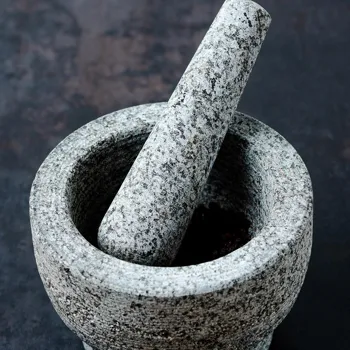
The slow grinding process releases the essential oils of the ingredients, resulting in a more intense and aromatic flavor. The heat generated by the grinding process also helps to toast the spices, further enhancing their flavor.
Many traditional Indian recipes call for freshly ground spices, and using a silbatta is the best way to achieve this authentic flavor.
Dhungaar
The Smoky Infusion Technique: Dhungaar is a smoking technique used to infuse dishes with a smoky flavor. A small piece of burning charcoal is placed in a metal bowl, and ghee or oil is poured over it, creating smoke.
The bowl is then placed inside the dish, and the lid is closed tightly, trapping the smoke and infusing the food with its aroma. This technique is often used to add a smoky flavor to dal makhani, baingan bharta, and other vegetarian dishes.
The smoky flavor adds a layer of complexity and depth to the dish, making it even more delicious.
Kadai Cooking
Wok Style Wonders: The kadai, similar to a wok, is a deep, round-bottomed cooking vessel. Its shape allows for even heat distribution and efficient cooking. It is widely used for preparing subzis (vegetable stir-fries), curries, and snacks.
The kadai's sloping sides make it easy to toss and stir the ingredients, ensuring that they are cooked evenly. Its great for fast cooking while also not burning at the bottom if prepared at a low heat.
AI Generated Content. Glance/InMobi shall have no liability for the content
